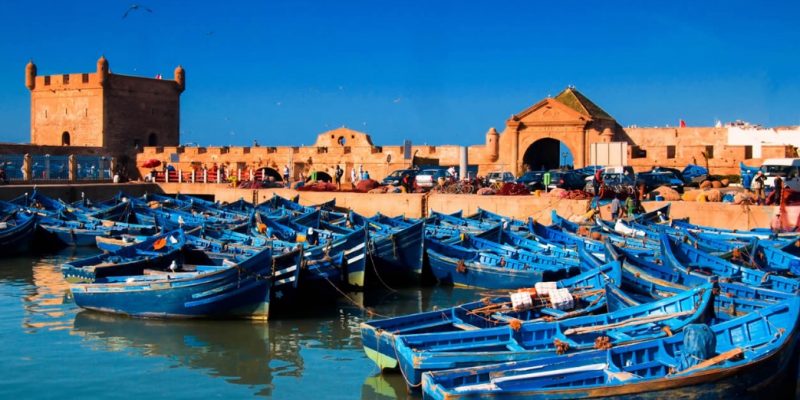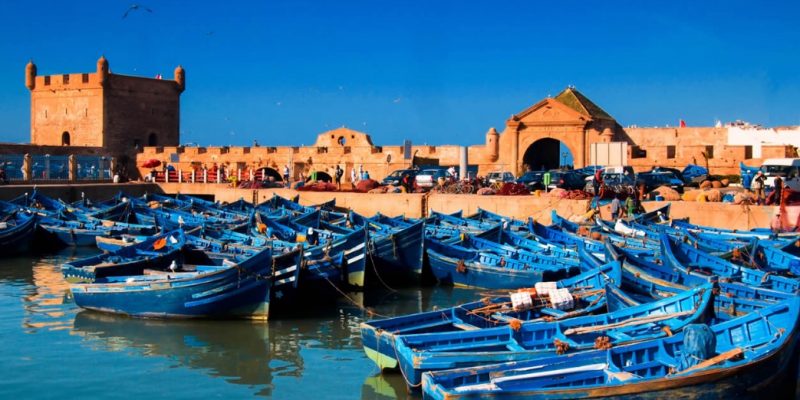Medina of Essaouira, Morocco
Essaouira, Morocco is at once familiar and exotic with its fortified walls, fishing harbour and seagulls soaring and screaming over the town. At first it seems as though this could be a town in Brittany, France – not such a strange thought given that Essaouira was designed by the same Frenchman who designed Brittany’s most famous port town, Saint-Malo. And yet once you enter the walls, it is also infinitely Moroccan: narrow alleyways, wind that reputedly drives people crazy, the smells of fish guts and damp sea air mixed with aromas of spices and thuya wood, women in white haiks (veils), midday palm-tree shadows on red city walls, and the sound of drums and Gnawa singing reverberating from shops and houses.
It is the coastal wind – the beautifully named alizee, or taros in Berber, that, despite the crowds, ensures Essaouira retains its character. It blows too hard to attract sun, sand and sea tourists: for much of the year, you can’t sit on the beach at all as the sand blows horizontally in your face. No surprise then that Essaouira has been dubbed ‘Wind City of Africa’ and attracts so many windsurfers. Sun-seekers head further south to the temperate clime of Agadir. The charm of the town is that it hasn’t been entirely taken over by tourism. The fishing harbour is just as busy as it always was, the woodworkers are still amazing at their craft and the medina is just as important for locals as it is popular with tourists.
Essaouira lies on the crossroads between two tribes: the Arab Chiadma to the north and the Haha Berbers in the south. Add to that the Gnawa, who came originally from further south in Africa, and the Europeans, and you get a rich cultural mix. The light and beauty have forever attracted artists to Essaouira, and the town has a flourishing art scene. The sculptor Boujemâa Lakhdar started the local museum in the 1950s and, in the process, inspired a generation of artists. Since then, the autodidactic naïf painters, who paint their dreams in a colourful palette, have earned international renown, mainly thanks to the efforts of the Galeries d’Art Damgaard.
Winter is the time to get closer to the real Essaouira, when the wind howls at its strongest and the waves smash against the city’s defences. In summer the town is invaded by throngs of Moroccan tourists, the beach is crowded and it is hard to find accommodation.



